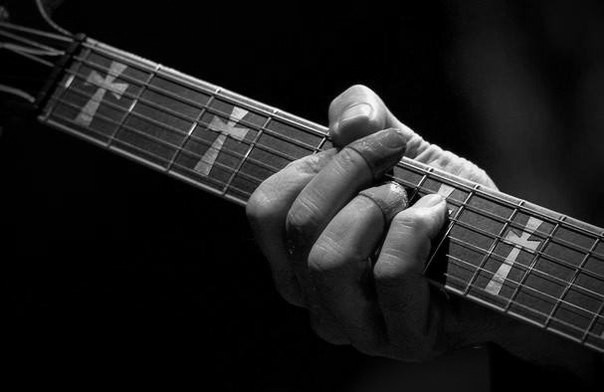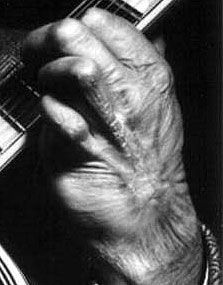The house is on fire (Django’s wagon accident)
The second night of November 1928 was a fateful one for Django Reinhardt, then a promising 18-year-old Romani guitarist who had recently made his first recordings. As he was going to bed with Florine “Bella” Mayer, a fellow Romani girl he had recently married, the wagon the couple shared went up in flames as a candle was knocked over by accident. They both escaped, but Reinhardt suffered extensive burns and had his right leg severely damaged.
More importantly for his music, however, Reinhardt’s left-hand ring and pinky fingers had been badly burned: he was told he would not be able to play the guitar again. Through perseverance and meticulous practice, however, he did something even more incredible: by developing a unique technique focused on his left index and middle fingers (using the two injured fingers only for playing chords), he managed to achieve a level of technical and musical mastery that remains unparalleled and awe-inspiring to this day.
After his recovery, Reinhardt started to develop an interest in jazz and it was his meeting and collaboration with violinist Stéphane Grappelli that would define his musical career. Together they formed the celebrated Quintette du Hot Club de France, the foremost European jazz group at the time, and would go on to make several classic recordings that continue to inspire music enthusiasts, while setting the standard for jazz guitar playing ever since.
Apart from its cataclysmic impact on the subsequent evolution of jazz guitar, Reinhardt’s accident would also have far-reaching consequences for the emergence of heavy metal, albeit in a less obvious way…
Heavy -sheet- metal (Tony’s factory accident)
Tony Iommi, a 17-year-old guitarist form Birmingham, was about to quit his job at a sheet metal factory and go play in Germany with his first band The Birds And Bees. His last day at work, though, would prove to be fateful: Iommi got injured, losing the tips of the middle and ring fingers of his right hand. Doctors told him he wouldn’t be playing guitar again.
It was finding out about Reinhardt’s own accident and comeback that gave Iommi (who played left-handed) the courage to continue playing and make music. He went on to adjust his guitar strings and amp settings, thus creating a unique sound that would give birth to a whole new music genre.

Just like Reinhardt, it was his disability that made Iommi explore new ways of expression and become more inventive. As he put it: “Of course losing my fingertips was devastating but, in hindsight, it created something: it made me invent a new sound and a different style of playing.”
As the examples of Django Reinhardt and Tony Iommi so tellingly illustrate, limitations and even misfortunes can be a powerful driving force and boost creativity, as long as there is determination and inspiration. It is -literally- though fire and flames, after all, that guitar playing has been transformed from the era of swing to that of heavy metal.






